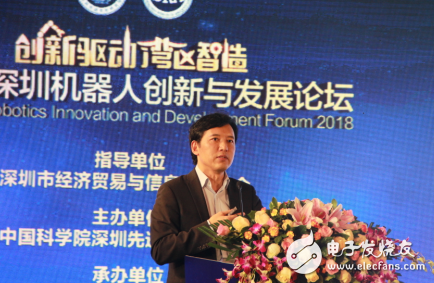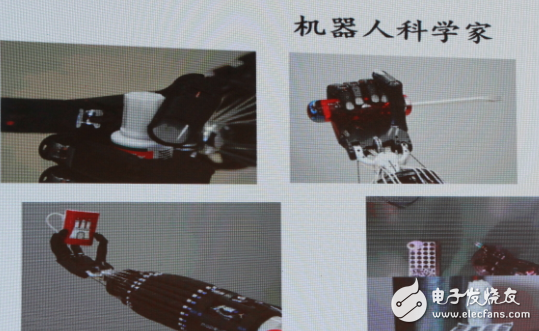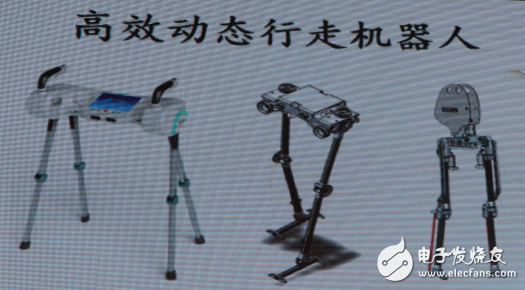With the advancement of the Internet of Things and various high technologies, the robot industry has also ushered in the 2.0 era. The next great era driven by data is coming. The combination of artificial intelligence and sensory technology is the new kinetic energy of future industrial development, and innovation will become an industry. Develop a strong engine.
From steam and electricity to today's Internet era, human industrial civilization has undergone tremendous changes. Nowadays, the demographic dividend is gradually disappearing and the cost of materials is rising. The manufacturing industry is striving to find a low-cost alternative to production. Various localities have introduced policies to promote the transformation and upgrading of the manufacturing industry. In this context, the Chinese robot industry has achieved rapid development, and combined with technologies such as the Internet of Things and artificial intelligence, it has created an application boom in various sub-sectors, and it has also created huge market opportunities.
As the most innovative city in China, Shenzhen has been developing future industrial plans and policies including robots since 2013. With the implementation of the 2025 China Manufacturing Strategy, the development of the Shenzhen robot industry is very fast. The scale of the industry has far exceeded 80 billion. In this process, the Shenzhen Robot Industry Association has made tremendous contributions in promoting industrial development service enterprises, including assisting the government in promoting industrial development.
Opportunities and challenges coexist, how can Chinese robotics companies break through in the fierce industry? On January 16th, the “2018 Shenzhen Robot Innovation and Development Forum†hosted by the Shenzhen Institute of Advanced Technology of the Chinese Academy of Sciences and hosted by the Shenzhen Robot Association was held in Shenzhen. The forum was based on the theme of “Innovation Drives the Bay Areaâ€. The latest technological achievements of the current Chinese robot industry are discussed, and the potential opportunities in the robot market are explained in detail.
Opportunities and challenges in the era of robot 2.0With the advancement of technologies such as the Internet of Things and big data, the robot industry has also ushered in the 2.0 era. All the facilities on the production line, including machines, people, products and other physical objects will be connected through the network. The next great era of data-driven is being Arrival, artificial intelligence, new materials, digital creativity, new display technologies will bring new solutions to our life scene, including unmanned chemical plants, elderly solutions. At the meeting, Zhang Jianwei, an academician of the Hamburg Academy of Sciences in Germany, gave an in-depth explanation of the challenges and prospects of the robot 2.0 era.

Zhang Jianwei said that the combination of artificial intelligence and sensory technology is a new kinetic energy for our next generation to truly produce the future. The future robotic system will move from 1.0, the robot in the cage or the fixed-programming robot to the so-called 2.0 robot, which can adapt to a variety of different environmental dynamic performances with excellent interaction capabilities. 2.0 robots actually put more traditional sensing, computing, control and communication functions on traditional robots and traditional electromechanical systems, so that we can realize the system functions, even if it is very complicated, without adding the whole system. The complexity of electromechanical systems allows machine intelligence to be more powerful than humans and can play a larger role in larger application scenarios.

Future robots will gradually become more and more long-term memory functions. Based on natural language processing, interactive forms of robots will talk to humans. This will bring more new possibilities to robots in the next five or ten years. can. Automated driving is also an important direction for robots and future systems. The future technology is an integrated approach between full and underactuated, which gives us some unique innovations in the overall design and control of robots in the future.

In addition, how to modularize large-scale production of large-scale furniture like furniture is also an important direction for future development. The robotic modules can be combined into a wide variety of configurations. This modular concept is an important enabling technology for robots.
In the future software, you can use the new methods of software open source hardware, such as the ROS operating system, to quickly make the open source algorithm of sensing and perception deep learning into a simple prototype model, using a new generation of ROS including ROS industry. The theory that can quickly develop the solution needed for segmentation scenario applications.
laser cutting
Henan Yongrong Power Technology Co., Ltd , https://www.hnyongrongglobal.com